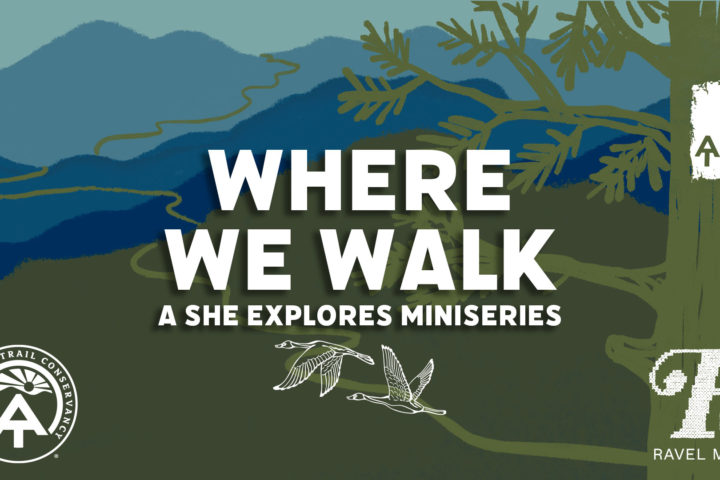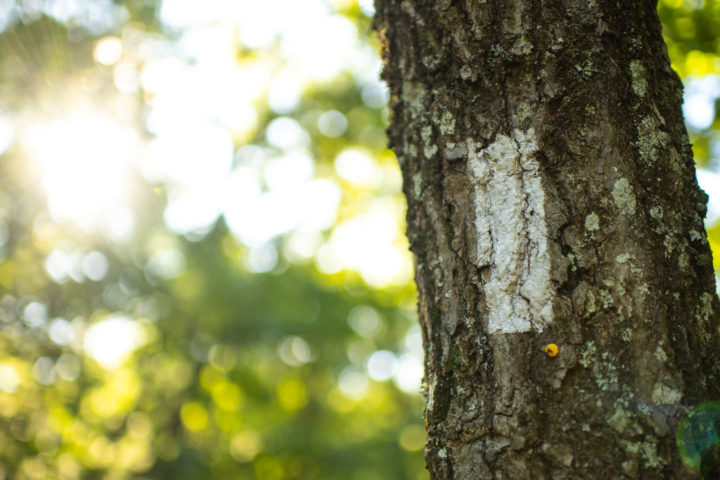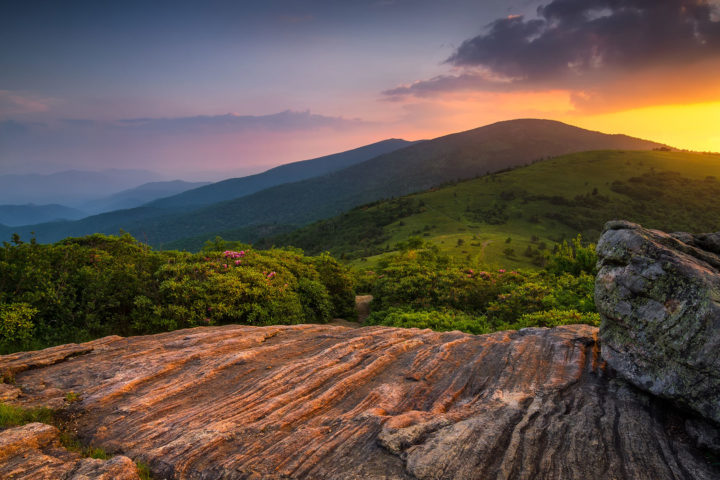By Mills Kelly
The A.T. and Race
February 18, 2021
The article below was originally published in the Winter 2021 issue of A.T. Journeys magazine. We are broadly sharing this and other select articles from this issue due to their important discussions on justice, equity, diversity, and inclusion, both in our work and throughout the greater Appalachian Trail community.
For the past five years I have been researching the history of the Appalachian Trail in archives from Georgia to Maine. Among the questions I’ve tried to answer are how major events in American history — World War II, the Civil Rights Movement, the Vietnam War — had an impact on the experiences of hikers and Trail club members. World War II and the Vietnam War were easy to locate in the archives, but no matter where I looked, it was as if the Civil Rights Movement never happened.
I have read my way through the archives of almost every Trail club and the Appalachian Trail Conservancy (ATC) and despite all my searching, I found exactly one letter among the thousands of pre-2000 documents I have examined that spoke to the issues of race and civil rights. That one letter lives in the archive of the Smoky Mountains Hiking Club in Knoxville, Tennessee.
From its founding in the 1920s, membership in the Smoky Mountains Hiking Club was open to, “any reputable White person,” according to the early club handbooks. In 1960, a member wrote to the club’s president, “I think the time is ripe to amend our constitution to eliminate the racial discrimination clause. it is too embarrassing to admit to a foreigner that you belong to a club, which he could not join, though we may invite him to a hike — just on account of the color of his skin.”
The club’s president responded that he was sympathetic to this concern and would be happy to see the club integrated. Although I found no further discussion of the issue in the archives, the 1963 club handbook had dropped its racially exclusionary language, so perhaps that lone member’s protest had an impact.
Everywhere else I looked, I kept expecting to find at least some discussion of the impact of the Civil Rights Act of 1964 in the various archives of the southern clubs. Instead, it was as though the Trail clubs — and the ATC — existed in an alternate reality where racism was not a fact in American life.
While it might be tempting to point fingers at the southern clubs, they were not alone in limiting their membership to people who they felt comfortable with. Until the 1970s and 1980s, many, if not most of the Trail clubs had restrictive membership requirements — e.g., nomination by at least two members, participation in a certain number of club activities — that made it quite simple to discriminate quietly against people of color, Jews, or really, anyone of any race, religion, or creed. The impact of these requirements is readily apparent in the photos of annual meetings, club hikes, and Trail work that one finds in the archives. Until the late 1980s, almost every face you see is White.
The ATC was no better than the Trail clubs. Several of its annual and later biannual meetings were held in segregated resorts in the South thereby excluding anyone of color who might want to attend. In 1940, ATC chairman Myron Avery wrote an essay about the old version of the A.T. that passed south of Roanoke toward the Pinnacles of Dan. This section, he said, had a “definite charm” and some “outstanding features,” one of which was that the area’s “racial stock was reputed to be perhaps the purest Anglo-Saxon in the eastern Atlantic states.” Who knew that getting to meet “pure” white people was a good reason to hike a section of the A.T.?
When I bring up the topic of race and the A.T. with friends, especially white hiker friends, they often ask some version of the same question, “Why do you think so few people of color hike?” Or, unbidden, they offer their own theories as to why one sees so few people of color on the A.T., such as, “Their families just don’t have a tradition of hiking,” or “It’s probably a socioeconomic issue.” What this way of looking at the issue misses is the many ways hikers of color have been made to feel unwelcome on the A.T. over the decades. It is precisely these misconceptions that should compel us to revisit the Trail’s history to understand completely the ways the Trail has not been open, welcoming, or safe to non-White communities.
For example, imagine for a minute, that it’s 1981 and you’re a Black hiker who decides to hike the Georgia section of the A.T. Despite your misgivings about being a lone Black person in the mountains of North Georgia, you catch a bus to Springer Mountain and start your grand adventure. The hike goes well for the first few nights, but when you arrive at the Montray Shelter (now Tray Mountain Shelter) everything changes. There in the shelter log you find an entry, in all capital letters just so you can’t miss it, a message with the n-word, which plainly threatens the life of any person of color who intends to stop there. After the shock of reading that threat fades, it dawns on you that lots of people have written in the shelter log since that racist threat and no one bothered to comment on it, to scratch it out, or to tear it out. They just left it there for you to find.
Robert Taylor, the first Black man to thru-hike the Trail in the 1990s, reported similarly racist behavior along the A.T. — hikers who looked at him like he might try to steal their gear, and people in supposedly friendly Trail towns who shouted racist threats as he tried to resupply or just pass through.
Those threats are not some relic of our racist past. In 2018, I hiked from Pen Mar to Duncannon in Pennsylvania, where I had arranged for a shuttle driver to pick me up in front of the legendary Doyle Hotel. When I called my driver to tell him I’d arrived, he asked if I would walk down to the mini mart a few blocks from the Doyle so he could pick me up there. Once I got in his car, I asked why he wanted me to walk to the edge of town. He said that because he was Black, people in town often yelled racist epithets at him and he was just tired of it.
Most White hikers also do not understand or even think about the fact that their relationships to the forests can be very different from those of Black hikers, whose ancestors were chased through those same woods by lynch mobs. Krystal Williams, a Black attorney who thru-hiked in 2011, told me, “When I hiked north out of Damascus, I was reminded that I’m walking for pleasure where my ancestors’ blood was spilled. I had a very visceral reaction at that moment. This reality is not understood or appreciated by many White hikers.”
If hikers, Trail clubs, and the ATC take ownership of the entire history of the Trail’s past, rather than a partial understanding of the A.T.’s past, then the possibility of change becomes real.
For the past 25 years or so, the ATC and some of the Trail clubs have begun to take seriously the notion that encouraging diversity, equity, and inclusion along the A.T. is a good idea. In a 2020 interview, Dave Startzell, the ATC’s executive director from 1986-2011, explained that by the mid-1990s, the ATC and some of the clubs had begun discussing strategies for change, but the success of those efforts has been uneven. So, while the Trail has been known as a place for inspiration and solace for millions, communities of color continue to report negative experiences and incidents that have made the experience less welcoming and inclusive than for their White counterparts.
Exclusionary membership policies, threats in shelter logs, racist taunts in Trail towns, historic photos of Trail club and ATC meetings that show nothing but White faces, the Confederate flag flying at a hiker hostel, and Swastikas painted on trees at trailheads in 2020 all send the same message — the Appalachian Trail is, and always has been, a place for White people. If hikers, Trail clubs, and the ATC take ownership of the entire history of the Trail’s past, rather than a partial understanding of the A.T.’s past, then the possibility of change becomes real. A clear-eyed understanding of the past opens the door for a just and equitable future for the Appalachian Trail.
Mills Kelly
 Mills Kelly is a professor of history at George Mason University in Fairfax, Virginia. He is currently writing a history of the Trail and has just completed a shorter book titled Virginia’s Lost Appalachian Trail, about the original route the Trail took between Roanoke and Damascus, that he hopes will be published in 2021. “I first hiked on the A.T. in the early 1970s and it seems like the Trail has been part of my life ever since,” he says. “While researching my book, I kept looking for sources that spoke directly to the role that race has played in the history of the Trail. The more I looked, the more frustrated I became about the almost total absence of such sources. I wrote an article about the A.T. and race to try to shed some light on what is truly the most under-appreciated and under-discussed part of the Trail’s history.”
Mills Kelly is a professor of history at George Mason University in Fairfax, Virginia. He is currently writing a history of the Trail and has just completed a shorter book titled Virginia’s Lost Appalachian Trail, about the original route the Trail took between Roanoke and Damascus, that he hopes will be published in 2021. “I first hiked on the A.T. in the early 1970s and it seems like the Trail has been part of my life ever since,” he says. “While researching my book, I kept looking for sources that spoke directly to the role that race has played in the history of the Trail. The more I looked, the more frustrated I became about the almost total absence of such sources. I wrote an article about the A.T. and race to try to shed some light on what is truly the most under-appreciated and under-discussed part of the Trail’s history.”
Discover More

Listen Now
“Where We Walk” Podcast
This six-part podcast miniseries explores the women who have helped make the Trail what it is today, as well as those who are shaping its future.

Official Blog
A Commitment to Justice
The Appalachian Trail Conservancy has taken inventory of the social landscape within the Appalachian Trail community and across the United States, and we believe that by making meaningful changes, the A.T. can be a space that is inclusive, open and safe for all.

A.T. Footpath
Continuing the A.T. Vision
Even after 100 years, Benton MacKaye’s 1921 vision for the Appalachian Trail continues to guide the ATC in its mission.
